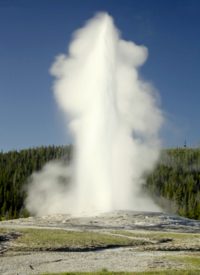
The report noted:
Well-run states have a great deal in common with well-run corporations. Books are kept balanced. Investment is prudent. Debt is sustainable. Innovation is prized. Workers are well-chosen and well-trained. Executives, including elected and appointed officials, are retained based on merit and not politics.
Based on data collected from numerous sources such as Standard & Poor’s, the Bureau of Labor Statistics, the U.S. Census Bureau, and the Tax Foundation, 24/7 Wall St. then ranked each state on its performance in 10 categories. The study concluded that Wyoming was the best-run state while California was the worst-run state.
#1 Wyoming ranked first for the second year in a row, getting high marks in a number of categories including high-school graduation rates (Wyoming has the highest rate of high-school graduates over age 25 in the country), and the fourth lowest rate of violent crimes and sixth lowest unemployment rate at 5.8 percent.
Looking behind the numbers, Wyoming has no individual or corporate income tax, and the state sales tax is a modest four percent, food excluded. It has no inheritance tax nor does it tax retirement income earned and received from another state. In 2008, the Tax Foundation ranked Wyoming as having the single most “business friendly” tax climate of all 50 states.
#2 Nebraska has the fourth lowest debt per capita in the country and is one of only 13 states with a AAA credit rating by Standard & Poor’s. It boasts the second lowest unemployment rate (right behind #3 North Dakota) at 4.2 percent thanks to its strong agricultural sector, which produces beef, pork, corn, and soybeans and equally strong industrial and financial sectors.
#3 North Dakota has an unemployment rate of 3.5 percent, the lowest in the nation (and it has not been above 5 percent in the past 20 years). Its booming oil industry has generated a $1 billion surplus to the state in just the last three years, the only state other than Montana to do so. This boom is being reflected in the state’s per capita income jumping from 38th 10 years ago to 17th now.
At the bottom, the study from 24/7 Wall St. shows the usual suspects coming in dead last: Michigan (48th), Illinois (49th), and inevitably California (50th).
#48 Michigan suffers from the third highest unemployment (11.1 percent) and holds a credit rating from Standard & Poor’s of AA-, one of only four with that rating. 24/7 Wall St. notes that Michigan “ranks among the worst in the country for violent crime, unemployment, foreclosures and home price decline.” The impact of the two-tier wage pacts installed following the collapse and federal bailouts of GM and Chrysler hasn’t been felt yet in any measurable way, with significant gains in employment in the auto industry still some years away.
#49 Illinois fell from 43rd place last year, performing poorly in most of the categories tracked by 24/7 Wall St, including its credit rating of just A+ (the second worst behind California), budget shortfalls, and corruption a la former Governor Rod Blagojevich, just sentenced to 14 years behind bars for influence-peddling. Blagojevich isn’t an exception: Former Governor George Ryan was convicted of racketeering and bribery in 2006, Michigan Congressman Dan Rostenkowski went to prison for mail fraud, and former Governor and federal judge Otto Kerner was jailed for bribery.
#50 California actually moved down one position from last year’s study, earning the title as the country’s worst-run state. In 2009, the state spent $430 billion, one-seventh of the total of all states’ expenditures in that year, which is reflected in the lowest rating S&P has ever given to a state: an A-. In spite of the spending, however, the economy shows little improvement, ranking second-highest in foreclosures and in its unemployment rate of 11.9 percent.
To pay for its prodigious spending, California levies a 9.3-percent maximum tax rate on income, plus a state sales tax of 8.25 percent along with real property taxes. Even so, the state faces a $28 billion “shortfall” with little evidence that the new Governor is managing the state’s finances any better than the last.
It’s obvious, when comparing the performance of the top three to the bottom three states in the 24/7 Wall St. survey, that the differences are in three fundamental areas: taxes, spending, and the size of government. The higher the taxes, the higher the spending, and the larger and more corrupt the government becomes. The lesson — which President George Washington taught, and many politicians refuse to learn — is that “Government is not reason. It is not eloquence. It is force. Like fire, it is both a dangerous servant and a fearful master.” The best-run states appear to have learned the lesson, while the worst-run states are still denying the truth of Washington’s dictum.



